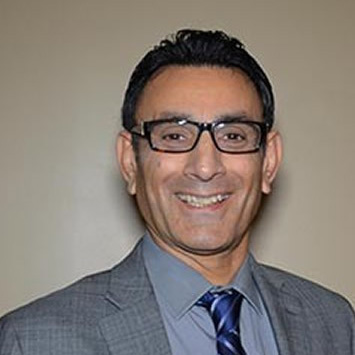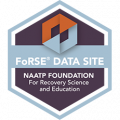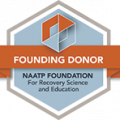From 2019 to 2020, both fatal and nonfatal drug overdoses increased in the United States. Although opioids are often the main focus of overdose reports, benzodiazepines are also dangerous and lead to unnecessary deaths. Compared to the second quarter of 2019, the 2020 second quarter benzodiazepine deaths were 43% higher. In 2020, the number of visits to healthcare providers for benzodiazepines increased. Health experts in the United States say that benzodiazepine misuse is a hidden part of the country’s overdose epidemic.
Benzodiazepine misuse has especially been growing in Indiana during the last several years. In 2017, benzodiazepine overdoses increased by 48%, which was a bigger increase than opioid overdoses. Various counties in Indiana report overdose deaths, and numbers continue to grow in many areas. For instance, by the end of the second quarter of 2022, Howard County reported 11 overdose deaths. Four of the cases involved benzodiazepines. Xanax is one of the most common benzodiazepines that people misuse. It is important to understand how it works and how to break an addiction to it.
How Does Xanax Work?
When a person’s symptoms return, it is often a sign of developing a tolerance to Xanax. Tolerance will be explained more in the next section. Health professionals adjust doses as necessary and may recommend different medications eventually.

Why Is Xanax So Addictive?
It is important to understand that tolerance, dependence and addiction are three different things. When a person develops a tolerance, it means that the current dose does not produce the same effects. A person must take doses more frequently or take higher doses to produce the same effects. Dependence happens when a person’s body relies on the substance, and negative symptoms occur without it. A similar example is coffee. Many people depend on a cup of coffee every day, and they often feel tired or sluggish without it.
Addiction differs from dependence because it means a person cannot stop taking the substance. This is true even though the individual understands the negative effects or harm it has on the body. Tolerance can lead to dependence when a person takes higher doses, and dependence can lead to addiction.
Signs of Xanax Addiction
- Intense urges or cravings to consume more Xanax.
- Continually needing to increase dose size or frequency to maintain the same effect.
- Spending a lot of time obtaining, using or recovering from the effects of Xanax.
- Withdrawing from important family or social obligations.
- Performing poorly at school or work.
- Taking Xanax for much longer than intended.
- Feeling unable to stop using it despite personal problems increasing.
- New legal troubles or financial difficulties tied to Xanax use.
If an addicted family member is behaving in a hurtful way, it is important to remain patient. Family members can still set healthy and clear boundaries while they try to help in several ways. Keeping an open line of communication can help. In some cases, an intervention may be necessary to encourage an addicted loved one to seek treatment.
What Is Xanax Detox?
Depending on a person’s individual health needs, detox may also involve using a different substance. For example, if Xanax is too harmful to a person who has anxiety, treatment is still necessary for the anxiety. Health professionals can find a suitable alternative for the individual. However, someone who does not have a medical need for the substance may have a different treatment plan.
Why Is Supervision Important While Detoxing From Xanax?
What To Expect During Xanax Detox
As the body adjusts to functioning without Xanax, there are several things that can happen. These are some common Xanax withdrawal symptoms:
- Vivid and disturbing dreams.
- Insomnia, restlessness and waking up frequently.
- Feeling tension or anxiety after waking up in the morning.
- Possible auditory or visual hallucinations.
- Depressed mood, anxiety or irritability.
- Feeling a loss of interest in daily activities.
- Muscle aches and tension.
- Feeling forgetful or demonstrating poor memory.
- Higher heart rate or blood pressure.
- Sweating or runny nose.
- Abdominal cramps, diarrhea or constipation.
As previously noted, suicidal thoughts, convulsions or seizures are also possible. While they may not happen to everyone during Xanax detox, they can be unpredictable and potentially dangerous without medical supervision.
There are several phases of detox. The first is a medical assessment, which is necessary to learn each person’s unique needs. Professionals create a treatment plan that may include medications. Withdrawal from Xanax is the next step. During the withdrawal period, professionals monitor patients closely. Along with medical staff, support staff strives to keep patients as comfortable as possible. At the end of the detox phase, a treatment plan starts. Proper treatment is necessary to beat addiction.
Medical professionals provide medications to help ease withdrawal symptoms. For instance, a professional may give a person with anxiety a different medication to treat it. If a person experiences constipation or diarrhea, there are supportive medications to correct those problems. There are also medications that can help people sleep better during detox. Each person’s medication regimen depends on the symptoms they experience and their individual health history.
Symptoms of withdrawal usually start within a day or two of the last dose. After about three to six days, symptoms usually reach their peak. In most cases, symptoms become more tolerable after about a week. However, symptoms may persist beyond that. For instance, as a result of stopping, people often experience strong cravings. Those can last for weeks or much longer. With professional addiction treatment, people learn how to cope with cravings and change behaviors.
What Happens After Detox?
After therapy, it helps to participate in 12-step groups. People with mental health issues may also need ongoing behavioral therapy. Our center for Xanax addiction treatment in Kokomo, Indiana provides comprehensive care that helps people start the path to recovery and increase their chance of maintaining sobriety.

Xanax Detox and Addiction Treatment in Kokomo, Indiana
https://www.in.gov/health/overdose-prevention/files/7815f01b218428d2fb0c9af7fb9defa61935ec68.pdf
https://www.in.gov/health/overdose-prevention/files/85_Drug-Overdose-Data-Brief_2019.pdf
https://www.dea.gov/sites/default/files/2020-06/Benzodiazepenes-2020_1.pdf

















